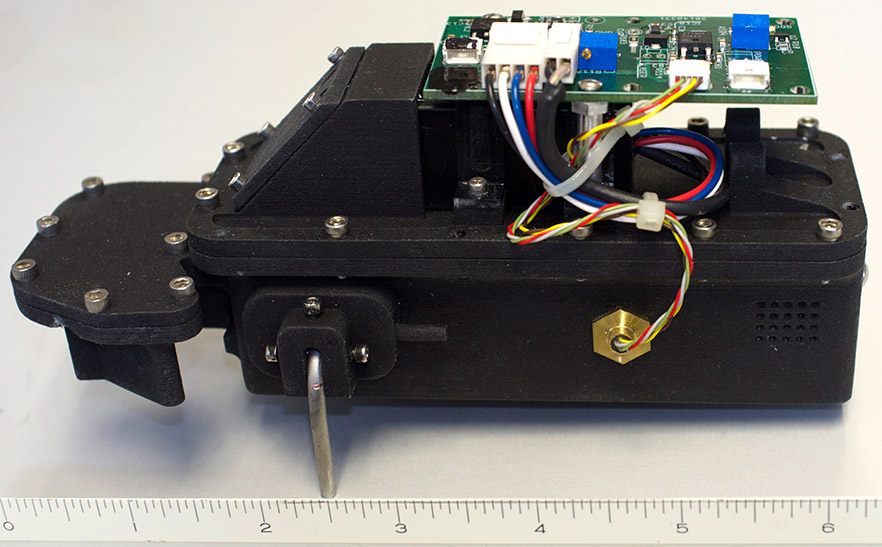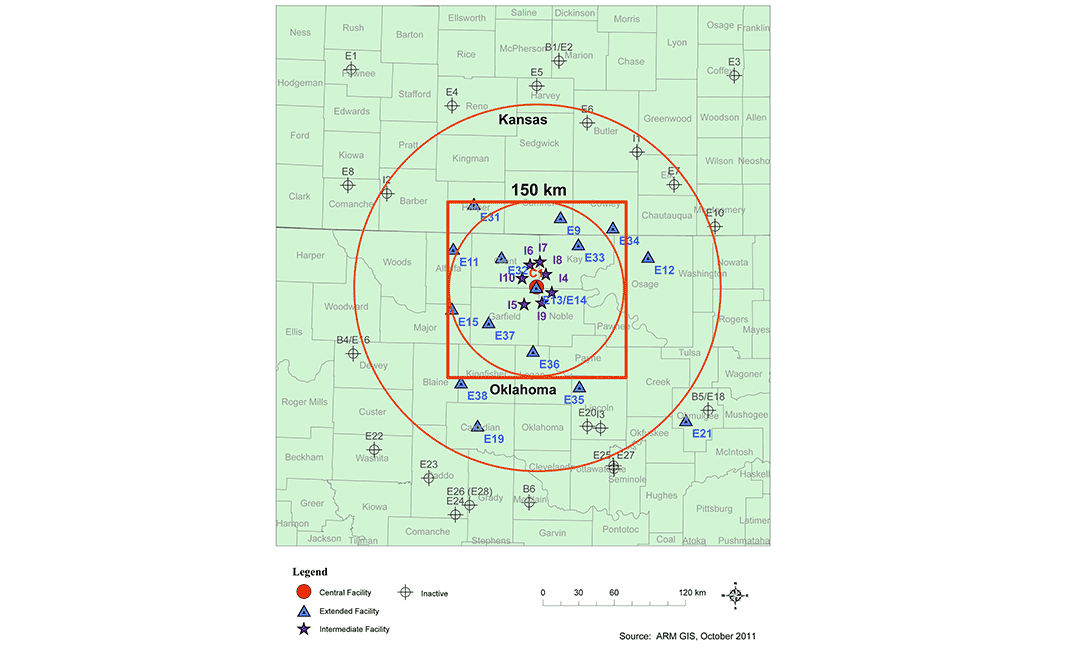Sensing
Aerosols Measurements Distributed Network
With funding from the DOE Atmospheric Radiation Measurement Facility, scientists from Brookhaven National Laboratory, NOAA’s Chemical Sciences Division, Yale University, and the University of Leeds will work together in a pilot project to test the scientific foundations of a distributed network for aerosol microphysical properties. A spatially dense network of relatively low-cost aerosol microphysical property measurements can target persistent model error that hampers our ability to project climate with useful accuracy. The measurement strategy is designed to minimize a major source of uncertainty associated with comparing global models with point measurements – the so-called ‘representation error’ (Schutgens et al. 2017.) The representation error arises because aerosol concentrations at a single measurement site can be persistently higher or lower than the average across a large model box (i.e., the measurement location is not representative of the area.)
The Pilot Aerosol Microphysics Network for Targeting Climate Model Uncertainty study will deploy a thirteen-site network of Printed Optical Particle Spectrometers (POPS, Figure 1) and other small instrument boxes across the ARM Southern Great Plains domain (Figure 2) covering the area of a climate model grid cell. While low-cost instruments may lack some features of conventional instruments, when deployed in such a way as to target the representation error, they are more likely to provide the specific information needed to reduce the large uncertainty range in global climate model simulations. The project will also serve as a platform to progress the technical developments required for deployment in more challenging locations.

Figure 1 The Printed Optical Particle Spectrometer (Gao et al. 2015) is a miniaturized instrument developed in NOAA’s Chemical Sciences Division that measures the particle size of aerosol which are important to atmospheric processes and air quality.

Figure 2 The DOE Atmospheric Radiation Measurement Facility’s Southern Great Plains site stretches across an area of northern Oklahoma into Kansas that is approximately the size of current grid cells in global climate models. POPSnet-SGP will deploy miniaturized instrument packages for measuring aerosol microphysical properties at thirteen of the sites across the SGP domain.
References
Schutgens, N.,Tsyro, S., Gryspeerdt, E., Goto, D., Weigum, N., Schulz, M., and Stier, P.: On the spatio-temporal representativeness of observations, Atmos. Chem. Phys., 17, 9761-9780, https://doi.org/10.5194/acp-17-9761-2017, 2017.
R. S. Gao, H. Telg, R. J. McLaughlin, S. J. Ciciora, L. A. Watts, M. S. Richardson, J. P. Schwarz, A. E. Perring, T. D. Thornberry, A. W. Rollins, M. Z. Markovic, T. S. Bates, J.E. Johnson & D. W. Fahey (2016) A light-weight, high-sensitivity particle spectrometer for PM2.5 aerosol measurements, Aerosol Science and Technology, 50:1, 88-99, DOI: 10.1080/02786826.2015.1131809


